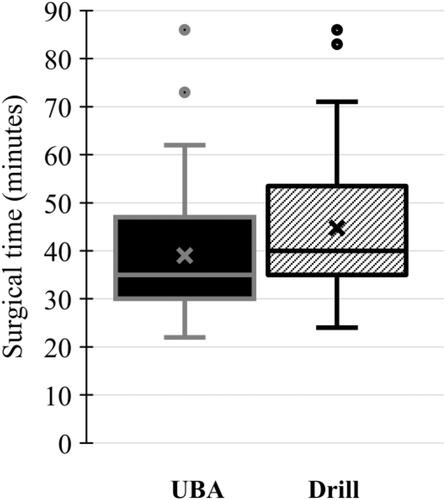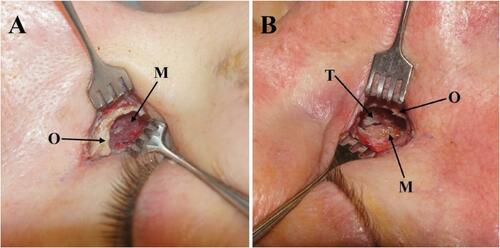Figures & data
Table 1 Baseline Patient Characteristics
Table 2 Risk Factors For Surgical Failure
Figure 1 Surgical time. Box and whisker plot demonstrates a statistically significant reduction in operative time for patients treated with the UBA (38.9 mins) compared to the high-speed drill group (44.7 mins; p= 0.01).

Figure 3 Osteotomy. (A) A completed bony ostium (O) through the left lacrimal fossa performed with the ultrasonic bone aspirator. The nasal mucosa (M) remains intact given the UBA’s ability to cut bone while sparing underlying soft tissue. (B) A completed bony ostium (O) through the right lacrimal fossa performed with the high-speed electric drill with a diamond burr. The nasal mucosa (M) demonstrates a small tear (T), an uncommon but potential complication of high-speed drilling.


